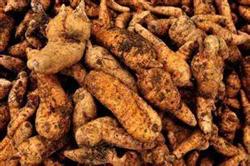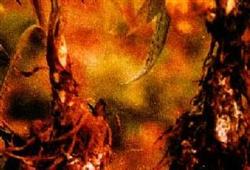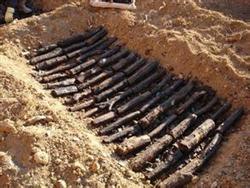Asexual Propagation technique of Gastrodia elata

First, it is better to choose sandy loam with deep soil layer, loose soil and good drainage or humus soil rich in organic matter for land selection and preparation. Yellow mud land, waterlogged land and sand and gravel land are generally not suitable for cultivation of Gastrodia elata. The air in the hemp planting ground should be fresh, cool and moist. Generally choose the backyard or under the forest trees. It is not easy for people and animals to trample on, and it is better to manage places that are easy to manage. Lax requirements for land preparation, generally remove sundries on the ground or cut down overdense shrubs, you can cultivate beds or dig holes to plant Gastrodia elata. Second, the preparation of fungus material 1. The preparation of the fungus. Generally choose 2 cm thick oak tree or birch, oblique cut into 8 cm 10 cm section spare. two。 The preparation of the germ stick. In general, the wood of broad-leaved trees can be used as materials for fungus sticks, such as oak, birch, catalpa and so on. Choose a trunk or branch that is 5cm thick, saw a stick that grows 40cm and 60cm, cut a fish scale every 3 to 5cm on both or three sides of the stick, and cut to the xylem. 3. The treatment of fungus. Use 50 kilograms of water. Ammonium nitrate 0.5 kg, magnesium sulfate 0.5 kg into a nutrient solution, the bacterial branches, sticks in the nutrient solution soaked for an hour to fish out, air-dried surface moisture can be used. Third, Gastrodia elata is mainly produced by vegetative propagation (tuber propagation). This method of propagation uses Gastrodia elata tuber as sowing material to produce new individuals directly. Big harvest processing, small continue to do sowing material. 1. The choice of planting. The tubers of Arrow, White, Rice and Gastrodia elata can all be used as sowing materials. from the point of view of harvesting tubers as medicine, white hemp is better than rice hemp and rice hemp is better than arrow hemp. In production, medium and small white hemp (weight 2.5 to 20 grams) is chosen as sowing material, which is the best sowing material because of its fast growth and strong reproductive ability. Flax seeds with complete ontogeny, normal color, no damage and no disease should be selected as planting materials. two。 Planting time. Gastrodia elata can be planted in either spring or autumn. Spring planting is usually around May 1 and autumn planting is after October. 3. The method of planting hemp. First put a thin layer of leaves at the bottom of the bed (hole), put the prepared bacterial stick along the bed (hole), fill the original soil and make the bacterial material half exposed, then put the bacterial branch in the shape of eight or oblique parallel, the two ends of the bacterial branch are close to the fish scale, put the egg-sized bacteria evenly in the fish scale, put the hemp seed between the bacteria, and then cover it with a layer of leaves. Put sticks, branches, strains and flax seeds on the leaves according to the same method. 2-3 layers can be planted according to the thickness of the soil layer. In this method, each layer uses about 6-7 bags of bacteria and 0.4-0.5 kg of hemp seeds per square meter. Finally, the bed (hole) is covered with about 10 cm of humus soil. Fourth, field management 1. Drought prevention. The growth of Gastrodia elata and Armillaria mellea requires high humidity, and the humidity in the bed (hole) should be watered regularly after planting. In general, the humidity in the bed (hole) is kept at 50-60%. two。 Waterlogging prevention. Tianma like wet conditions, but afraid of stagnant water, into the rainy season should pay attention to drainage. 3. Anti-freezing. When Gastrodia elata is overwintering, the bed (hole) should be covered with thick soil, leaves or film. Fifth, pest control Gastrodia elata in the cultivation process, there are not many diseases and insect pests, mainly the harm of miscellaneous bacteria is more serious, it is necessary to create an excellent environment for the growth of Armillaria mellea and inhibit the growth of miscellaneous bacteria. To achieve the following points: 1. Choose fresh sticks: fresh sticks can reduce the infection of miscellaneous bacteria. two。 Choose the right place: where you plant Gastrodia elata, you must choose ginseng fields or forests with good drainage and loose soil to avoid stagnant water after rain. 3. Strains should be pure and sufficient: release more high-quality strains to accelerate the growth of Armillaria mellea and take advantage of the advantages of Armillaria mellea to inhibit the growth of miscellaneous bacteria. 4. Strengthen the management of moisture and temperature in the bed (hole): pay attention to the changes of temperature and humidity in the bed (hole), and keep the humidity in the bed (hole) stable, so as to facilitate the growth of Armillaria mellea and inhibit the growth of miscellaneous bacteria. Sixth, the harvest and processing of Gastrodia elata. Harvest. Gastrodia elata should be harvested in the dormant period, that is, around October to November in autumn or April in spring. When harvesting, we should first remove the covered soil or leaves, and then take out the fungus, and then take Arrow hemp, white hemp, rice hemp. Arrow hemp and large white hemp are processed into commercial flax, and other small white hemp and rice hemp are used for planting. two。 Processing: ① washing and scraping: after harvest, Gastrodia elata is washed with water to the surface free of dirt, and hard objects are used to wipe off the outer scales. ② steaming and cooking: steam hemp on the drawer according to different grades, steam for 15 minutes for 20 minutes, until the tubers have no white heart; boil hemp is to boil water or rice soup, put different grades of tubers into boiling water, boil for 5 minutes and 15 minutes, boil until the tubers are a little transparent. ③ drying or sun drying: put the cooked Gastrodia elata in the drying room or outside on a sunny day.
- Prev

Diseases and insect pests of Atractylodes macrocephala Koidz and their control techniques
White silk disease: also known as "sugar rotten", to damage the root and stem of Atractylodes macrocephala Koidz, there are no obvious symptoms in the aboveground part at the initial stage of the disease. In the later stage, with the increase of temperature and humidity, the hyphae penetrated the soil layer, the white hyphae were covered with rhizomes and the surrounding soil surface, and the tip of the killed plant wilted, drooped, and finally the whole plant withered. Characteristics of the disease: soil, technical planting is.
- Next

Key points of cultivation of Gastrodia elata
In summer and autumn, Gastrodia elata enters a period of exuberant growth and maturity, and it is also a key period of production management of Gastrodia elata. 1. The gutter drains moisture. Gastrodia elata enters the vigorous growth period, at this time should begin to check whether the drainage ditch of the cultivation site is stagnant water.
Related
- Fuxing push coffee new agricultural production and marketing class: lack of small-scale processing plants
- Jujube rice field leisure farm deep ploughing Yilan for five years to create a space for organic food and play
- Nongyu Farm-A trial of organic papaya for brave women with advanced technology
- Four points for attention in the prevention and control of diseases and insect pests of edible fungi
- How to add nutrient solution to Edible Fungi
- Is there any good way to control edible fungus mites?
- Open Inoculation Technology of Edible Fungi
- Is there any clever way to use fertilizer for edible fungus in winter?
- What agents are used to kill the pathogens of edible fungi in the mushroom shed?
- Rapid drying of Edible Fungi

